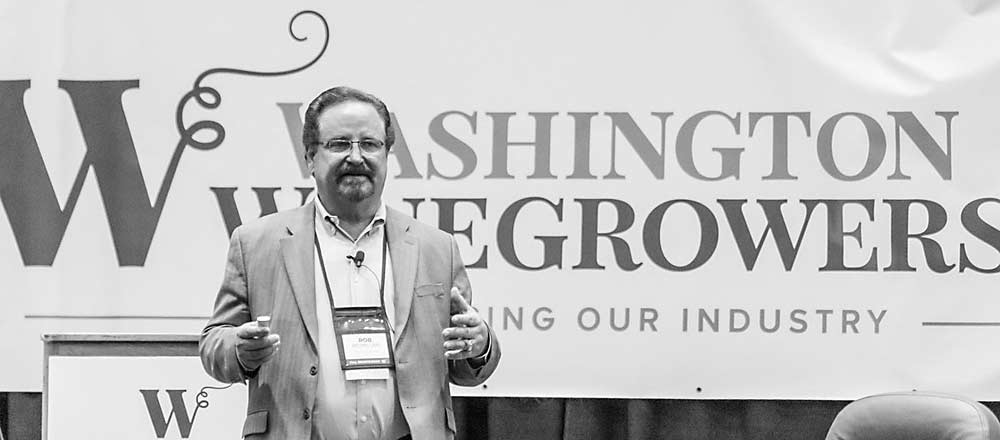
Are millennials the problem — or the solution?
That’s one of the questions the Washington wine industry is grappling with, as it faces ongoing oversupply, according to experts who spoke on the first afternoon of the Washington Winegrowers Association’s annual meeting in Kennewick.
Wine supply has been outstripping demand for several years, said economist Chris Bitter, who tracks the Washington wine market. The 2019 crush was down significantly, due to freeze damage and market challenges, but not enough to solve the inventory glut problem.
“We have a structural imbalance between supply and demand, and I don’t see a quick fix here,” he said.
What happened to wine demand?
Chateau Ste. Michelle CEO Jim Mortensen pointed to a picture of White Claw, the new hard seltzer product that’s been flying off the shelves in recent years. “This is enemy No. 1,” he said.
Enter millennials — the generation now between the ages of 22 and 37 — who drink wine, but less frequently than their parents. It’s not that they don’t like wine, but rather, they have limited funds and a lot more options, said Rob McMillan, who is head of the wine division for Silicon Valley Bank and is a wine industry analyst.
The competition the West Coast wine industry faces isn’t foreign imports anymore, it’s craft beers and hard seltzer and spirits, Mortensen and McMillan said. Those products are successfully marketing to consumers and adapting to new health and environmentally conscious trends in ways that wine hasn’t, they said. That needs to change.
Surveys show that younger consumers gravitate toward natural, sustainable, low calorie and no-artificial in marketing, said Lulie Halstead, founder of the United Kingdom-based Wine Intelligence firm.
“Wine is the beverage young consumers want, they just don’t know it,” McMillan said.
To target that younger demographic and better compete with the hard seltzers of the world, Chateau Ste. Michelle is innovating, Mortensen said. The winery crushes about 60 percent of Washington’s grapes.
“We have indeed underperformed the market since 2016,” he said. “We can’t win a new game with an old game plan.”
He talked about the success of the canned wine sales for the company’s 14 Hands brand, which brought in new consumers, better shelf location, and a better price point. Next, the company plans to release a new brand of Sauvignon Blanc with calorie and sugar content on the label and a “light” message and 250 milliliter aluminum bottles with playful names and labels.
The company is also moving into supplying the private label market and looking to develop e-commerce strategies.
—by Kate Prengaman
Disclosure: This author is a millennial.
Related:
—Vineyard health check draws a crowd
—Winegrowers honors industry leaders






There definitely is an imbalance between production and consumption, but this may be a normal cyclical dynamic that has played itself out many times over the last few decades or maybe even since the wine industry became an industry in the late 1800’s. But I believe that a bigger problem is the “premiumization” of the wines we buy every day. I have seen prices increase dramatically over the past decade as producers touted the “premiumization” as a panacea for their way to bigger profits. $10 wines have become $15 or $16 or more… $15 wines have become $25 is this the way to broaden our consumer base? Is this the way to bring millennials into the wine market?
I think we need to look at many of our own actions as we try to move along and solve this difficult problem.
Yes the tasting room is the front end. However, sophisticated strategic direct marketing keeps them from dropping out of the back end into oblivion.
This idea that the consumer (millennials) are the problem is fascinatingly ridiculous. It would seemed to be spurred by those who are choosing not to change with the times, alter their marketing, or who are plain lazy. It is us in the wine industry who are at fault if we cannot provide good reasons for the millennials to visit our wineries, tasting rooms, wine bars, etc…. Go to work and find a solution instead of being part of the American trend toward playing the blame game. Or, better yet, don’t go to work and let those of us that do reap the benefits.